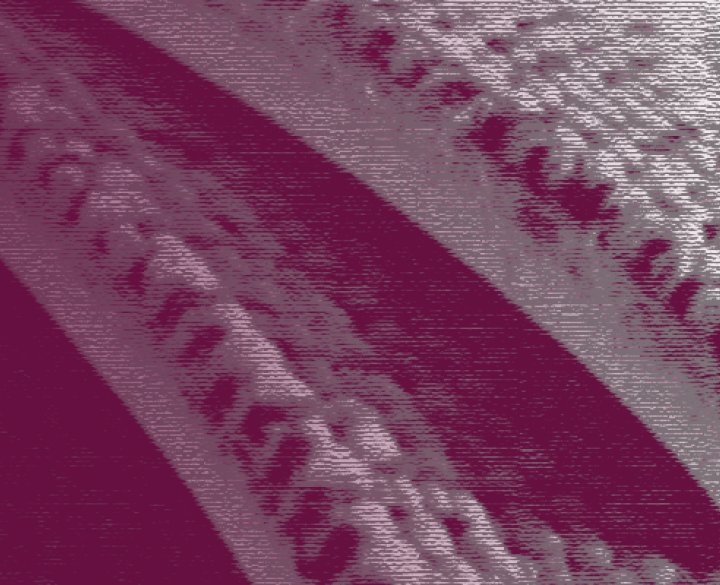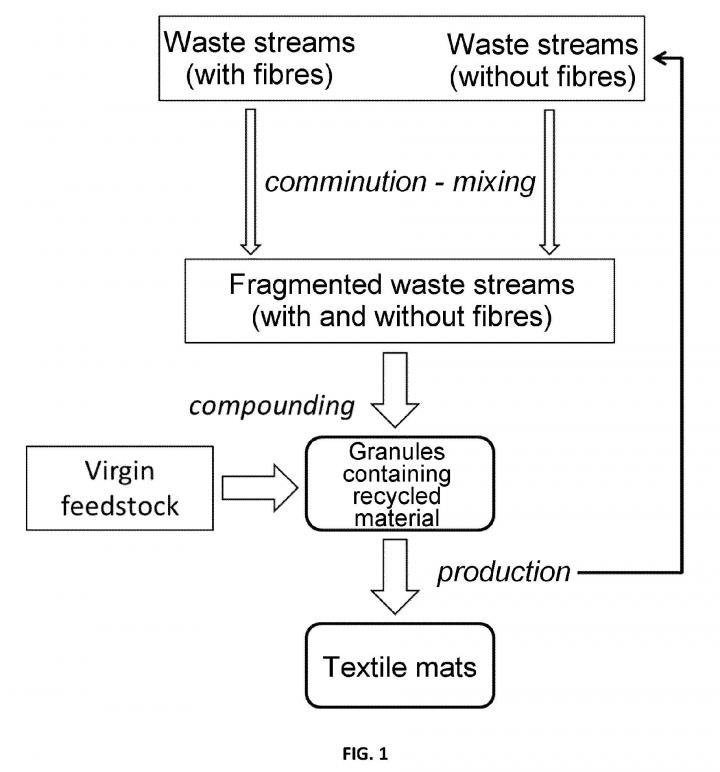Applicant: Empire Carpets International
Inventor: DEGANDT PIETER-JAN
Patent number: EP3786353
Textile-based floor coverings are usually made of a woven or tufted textile top layer, an intermediate fabric to provide additional stability and to ensure fibre bonding, and an end or bottom layer (or secondary backing) providing properties, including anti-slip, bonding, weight, etc.Each of these layers is made from different materials to achieve the desired properties for each layer, creating different waste streams, such as shearing dust, edge trimmings, discarded finished products and the like, which renders waste processing and recycling of such products more difficult.
The aim is always to dissect the products to obtain the pure polymers and/or the natural fibres and to make them suitable for re-use and recycling. Moreover, re-use and recycling is also rendered more difficult due to variations in composition, colour and properties of the waste products. Consequently, the waste-processing processes of textile-based floor coverings require considerable investments and have a large ecological footprint (inter alia regarding water and energy consumption and water or environmental pollution). However, in many cases it is not even possible to separate the various polymers, such as a textile product/floor covering consisting of PA (polyamide) yarn with PP (polypropylene) primary backing and a latex back face. A large part of the waste is thus incinerated, resulting in the associated CO2 emissions.
Therefore, there is a need for textile products, in particular textile floor coverings, which can readily be recycled to reuse a large amount of the used materials and internal/external waste streams in the production process of a new article. Furthermore, there is a need for a textile floor covering, which comprises a large amount of recycled waste streams, but having the same high quality as a textile product or textile floor covering made without recycled waste streams. Above all, there is a need to reduce the ecological footprint of both existing and new textile products.
How did Empire Carpets International solve the problem?
The present invention provides a method to manufacture a textile floor covering in a technically inexpensive, efficient, and sustainable manner. The textile floor covering consists of recycled material and of a limited number of raw materials that can therefore easily be recycled. Composite granules are used as secondary backing material, which have perfectly equivalent or even better properties than a TPE-based (thermoplastic elastomer) reference backing material and/or other types of secondary backing materials, without recycled textile waste products, including pile adhesion, delamination, fibre-binding, ageing, emission of volatile organic compounds, cutting edge durability, dimensional stability and/or squareness.
The composite granules are also colourable as desired and are therefore not influenced, or are influenced to a lesser degree, by the colour of the waste products which are processed in the composite granules. The recipe of the composite granules can also easily be adapted to the type and amount of waste products which are being recycled.
The composite granules comprise a thermoplastic elastomer (TPE) and fibre fragments. The fibre fragments have a particle size of between 0.1 and 3.0 mm. The fibre fragments comprise a thermoplastic synthetic material selected from the group of polyamides, polyesters or polyolefins, optionally in combination with TPE. In some preferred embodiments, the thermoplastic elastomer (TPE) comprises SEBS or SBS or a polyolefin. The fibre fragments comprise comminuted or fragmented textile waste products or recycled textile material, such as shearing waste, tuft scraps, yarn scraps, edge trimmings, rejected textile products or rejected textile floor covering. The composite granules are manufactured by compounding TPE and the fibre fragments (extrusion process). The fibre fragments are fibres of polyamide, such as nylon, polyester, or polyolefins, such as PP, having a length of 0.1 to 3 mm.
Advantages
- The new production method avoids repolymerisation and lowers the cost price. The TPE is highly compatible with the individual particles and/or fibre fragments, as a result of which composite granules can quickly be formed. Such a composite ensures that the granules are compatible with a range of other polymers and are suitable for many purposes.
- Fragmented textile waste products or recycled textile material, such as shearing waste, tuft scraps, yarn scraps, edge trimmings, rejected textile products or rejected textile floor covering. Reprocessing textile waste products to form secondary backing of new textile products makes it possible to significantly reduce the number of waste streams. In addition, the textile waste products comprise the same materials as a textile product according to the present invention, which enhances and ensures compatibility between the recycling material and the new "virgin" raw materials. In certain embodiments, the method furthermore comprises the step of comminuting or fragmenting textile waste products before manufacturing the composite granules.
- Such fibre fragments reinforce the TPE backing and increase the strength and durability of the laminated textile products. In addition, the presence of the fibres in the TPE backing is easily detectable, in a visual way, via microscopy, or via chemical analysis.






